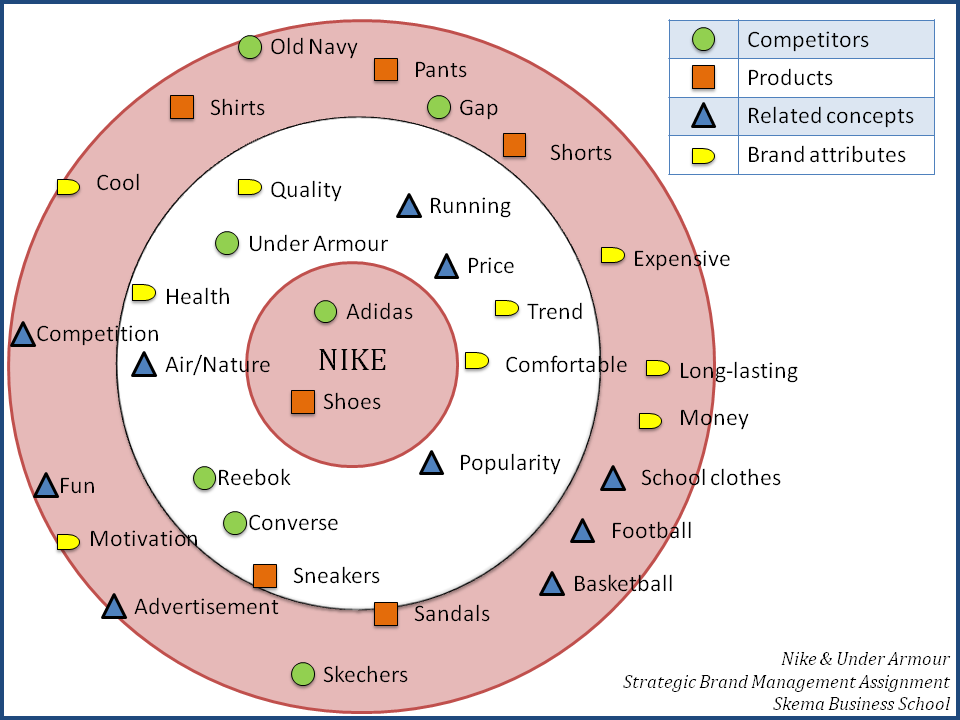5 ways to build a positive brand association

The word association game
How did a sugary energy drink come to be associated with extreme sports?
When you think of Red Bull, images of cliff diving, motorbike racing, and wingsuit flying likely spring to mind. You might think of adrenaline, excitement, and living on the edge. You might even feel energized in your body.
This is no accident—this is brand association, perfected.
Brand association works like a word association game: it’s the first thing that comes to mind when you hear a brand name. It could be a product or service, or something less tangible like a feeling or concept.
Here are a few examples:
- Red Bull: Energy drink, wings, extreme sports
- Coca-Cola: Soft drink, Christmas, classic, the color red
- Disney: Animation, Disneyland, magic, nostalgia
- GoPro: Weather-proof camera, travel, adventure
- Templafy: Document automation, tech, innovation
The goal is to ensure that the words tied to your brand are not only positive, but instantly recognizable and unmistakably clear.
Ready to sharpen your brand association? Let’s make like a Red Bull athlete and dive in.
What is brand association?
Brand association refers to the qualities, emotions, or concepts that consumers connect to a brand. These associations are often built over time, and are shaped by consumer experiences and marketing efforts.
If they align with your brand’s values and are positive, they help build trust and loyalty. If they don’t, it’s time to revisit your messaging to ensure it’s clear, consistent, and compelling.
Several factors influence brand association, including:
- Your brand’s core identity and messaging
- Visual elements like logos, colors, and design
- The overall customer experience
- Product quality and service
- Customer reviews and recommendations
- Public reputation
- Marketing and advertising campaigns
- Social media presence
The good news is that most of these factors are under your control, which means you can actively influence how consumers perceive your brand.
Not all publicity is good publicity
But what happens when it all goes wrong?
When things go south, negative publicity can quickly harm a brand’s reputation. Bad press doesn’t always mean more attention—it can erode trust and push customers away.
Take United Airlines, for example. When a passenger was forcibly removed from a flight in 2017, the backlash was fast and damaging. In fact, United Airlines’ stock value dropped by nearly $1 billion in days (source: BBC).
This shows the importance of actively managing your brand’s public image. Negative publicity, if not addressed swiftly, can be costly to more than your brand’s reputation.
What is a brand association map?

Image source: Nike vs. Under Armour
A brand association map helps companies identify which terms and concepts consumers connect with your brand. They work by placing the most highly associated words in the centre, so you can visualize how closely your brand association matches your brand goals.
If you’re unsure how your brand is currently being perceived, a consumer survey can provide valuable insights. Here’s how:
- Select respondents familiar with your brand.
- Ask them to list the terms they associate with your brand, and rank them in order of importance.
- Analyze the results and create a brand association map to visually represent those insights.
This map will help you make informed decisions about how to adjust your branding and messaging to better connect with your audience.
brand association
5 ways to build a positive brand association
- Define your brand identity clearly
A strong brand identity sets the foundation for positive brand associations. Your mission, values, and personality should be clear. They should shape everything from your messaging to your design, to create a stronger connection with your audience. - Ensure consistency across all customer touchpoints
Consistency is crucial. Every interaction, whether online or offline, should reflect your brand’s core values. A unified experience builds trust and reinforces your brand identity. - Choose your partnerships carefully
Your brand’s reputation is also shaped by the companies and influencers you work with. Ensure your partners share your values, especially when it comes to social responsibility. Consumers expect brands to stand for something. - Identify and address potential threats
Stay proactive in monitoring your brand’s reputation. Use tools like social listening and customer feedback surveys to spot issues early and address them before they escalate. - Prepare with a crisis management plan
A crisis can happen at any time, but a solid plan helps you act fast. Whether it’s addressing complaints or managing media coverage, being prepared allows you to control the narrative and protect your brand’s reputation.
How document automation can improve brand association
You may not be able to completely control how people think of your brand. But consistency can ensure the right messages reach customers again and again.
Document automation reduces the risk of inconsistencies and human error, by centralizing control of your brand’s voice, tone, and visual identity. This makes sure your brand is cohesive across all communications, reinforcing positive brand association.
Templafy features that enhance brand consistency and protect your reputation
Tailored and branded document templates
Templafy’s pre-built document templates simplify the creation of proposals, contracts, and reports, all while reflecting your brand’s corporate identity. These templates adapt to user profiles, ensuring content remains relevant. They reduce errors, guarantee accuracy, and produce compliant outputs that strengthen your brand’s reputation.
Centralized brand asset management
Templafy’s brand asset management system allows teams to access all your logos, fonts, and other brand elements directly within the apps they use every day, like Microsoft Word, PowerPoint, and Outlook. This embedded access ensures your team always has the correct assets at their fingertips, simplifying document creation and maintaining brand consistency in every communication to protect your corporate reputation.
Dynamic document creation
Templafy makes document creation easy with dynamic, pre-approved templates that pull in data from your systems, like your CRM or ERP. This ensures every document is personalized while staying on-brand.
Centralized control over key elements—like addresses, logos, document classification, and disclaimers—ensures compliance and reduces errors.
By automating the process, Templafy helps maintain brand consistency, professionalism, and trustworthiness, so every document strengthens your corporate reputation.
Ready to improve your brand association?
Start aligning your brand across all touchpoints today with Templafy. Get in touch with us to see how we can help you automate your documents and elevate your brand.



